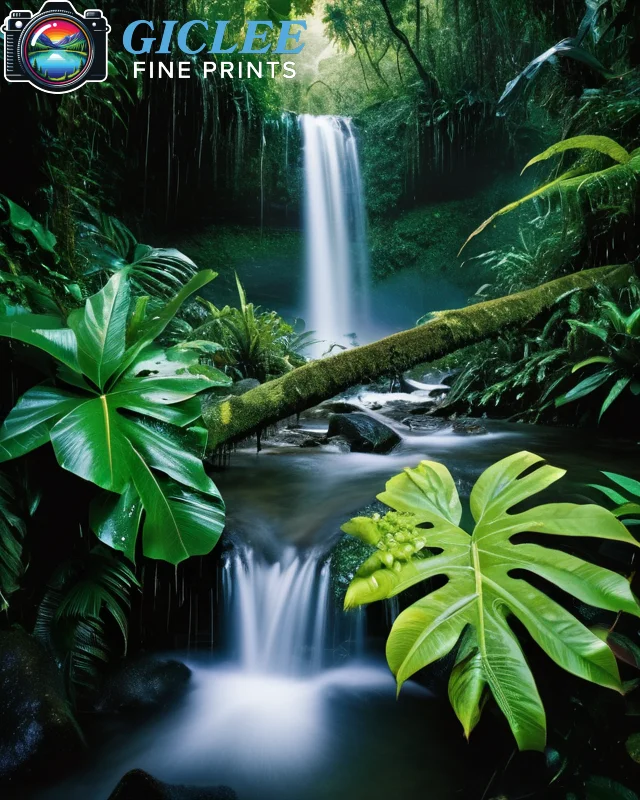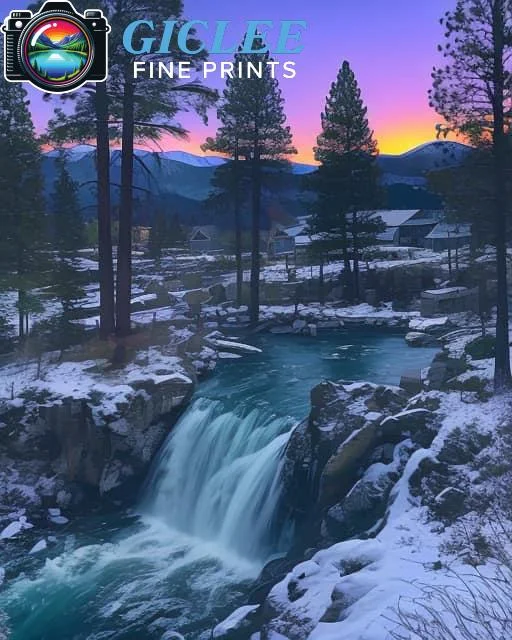
When it comes to printing your artwork or photographs, the size of your canvas, fine art paper, or metal prints can have a significant impact on the overall presentation and visual effect. The right size can enhance the details, balance the composition, and create a powerful statement, while the wrong size may diminish the impact of the piece. At Giclee Fine Prints, we understand how crucial it is to choose the correct printing size to elevate the look and feel of your work.
Enhancing Detail and Clarity
The size of your print plays a critical role in how details are perceived. Larger prints tend to enhance intricate details, making them more visible and impactful, while smaller prints may condense the finer points, offering a more intimate viewing experience.
Key Considerations:
- Large Prints: When printing larger images, such as canvas or fine art paper prints, the details in textures, colors, and shadows become more pronounced, creating a dramatic visual effect.
- Small Prints: For smaller prints, such as posters on my wall or peel and sticks for walls, the focus shifts to the overall composition, and the fine details may appear more subtle, offering a more understated aesthetic.
Best For:
- Large-format prints of landscapes, architectural photography, or abstract art where details play a significant role in the overall impact.
- Smaller prints for portraits or intimate scenes where the composition as a whole takes precedence over fine detail.
Creating a Statement with Large-Scale Prints
One of the most effective ways to create a visual statement is by opting for large-scale prints. Oversized canvas or metal prints draw attention, transforming an entire space and becoming the focal point of a room. Large prints help convey boldness, making them perfect for art exhibitions, gallery walls, or corporate spaces.
Key Benefits:
- Maximized Impact: Large prints dominate the visual field, capturing the viewer’s attention immediately.
- Room Transformation: A large print can change the entire feel of a space, adding depth, color, and texture to any room.
Best For:
- Abstract art, landscape photography, or dramatic portraits where large scale enhances the emotional or visual impact.
- Corporate offices, lobbies, or gallery spaces where making a statement is essential.

Balancing Size with Composition
Choosing the right print size is essential to maintaining balance in the composition. For some artwork or photography, enlarging the print may overwhelm the composition, while downsizing may cause key elements to get lost.
Key Considerations:
- Balanced Proportions: Consider the balance between the subject and negative space. For instance, a print giclee of a minimalist composition may benefit from a smaller size to keep the focus on the key subject, while a highly detailed image can be enlarged without losing balance.
- Subject Emphasis: For images with a central focus, the size of the print should enhance the subject, ensuring that key elements are not overshadowed by unnecessary details.
Best For:
- Minimalist or abstract pieces, where size can either highlight or diminish the central subject.
- Photography with a clear focal point, where size selection plays a role in maintaining or amplifying the subject’s importance.
Creating an Emotional Impact
The size of your print can influence the emotional response of the viewer. Large prints tend to evoke stronger emotions by immersing the viewer, while smaller prints can create a sense of intimacy or subtlety.
Key Benefits:
- Immersive Experience: Large prints, such as canvas or metal prints, can envelop the viewer, creating an immersive experience that evokes a powerful emotional response.
- Personal Connection: Smaller prints often create a more intimate experience, inviting the viewer to engage with the details on a closer, personal level.
Best For:
- Large-scale art intended to captivate and engage the viewer emotionally, such as dramatic landscapes or conceptual art.
- Small prints where personal or intimate connections are emphasized, such as family portraits or emotional moments.
Maximizing Space and Aesthetics
The size of your canvas, fine art paper, or metal prints should also complement the space where they will be displayed. Oversized prints may overwhelm small spaces, while small prints can get lost on large walls. The key is to create harmony between the print size and the space.
Key Considerations:
- Large Spaces: Large wall spaces benefit from oversized canvas prints or multi-panel displays that fill the area and create a balanced visual experience.
- Small Spaces: In smaller spaces, such as bedrooms or cozy living areas, smaller prints or medium-sized art are more appropriate, ensuring the room doesn’t feel cluttered or overwhelmed.
Best For:
- Large walls in living rooms, corporate offices, or galleries where oversized prints will make the most impact.
- Smaller rooms or personal spaces where medium or small prints create an inviting, balanced environment.

Maintaining Print Quality
When increasing the size of your print, it’s essential to ensure that the resolution and image quality are maintained. Enlarging an image beyond its optimal resolution can lead to pixelation or loss of detail, diminishing the overall impact.
Key Considerations:
- Resolution Matters: High-resolution images are required for large-format prints to ensure clarity and sharpness are maintained. Make sure your file is large enough to support the intended print size without loss of quality.
- Fine Art Paper vs. Canvas: While both canvas and fine art paper can be printed at large sizes, canvas may be more forgiving with lower-resolution images due to its textured surface, which can mask minor imperfections.
Best For:
- Large-scale prints where high-resolution files ensure crisp, clear details.
- Canvas prints that can accommodate larger sizes without sacrificing image quality due to the natural texture of the material.
Budget and Practicality Considerations
While larger prints can create a more significant visual impact, they also tend to be more expensive due to the additional materials and framing required. Additionally, the practicality of shipping, transporting, and installing larger prints should be considered.
Key Considerations:
- Cost: Larger prints, especially on canvas or metal, come with higher production and shipping costs. Make sure the budget aligns with the desired size.
- Practicality: For large-format prints, consider the logistics of hanging, mounting, and maintaining the artwork. Will the size fit the intended space, and can it be easily installed?
Best For:
- High-end projects or exhibitions where making an impact is worth the additional cost.
- Practical installations where space and budget constraints must be considered, such as smaller homes or limited gallery spaces.
Contact Us
Our address is: 3816 Pioneer Trail Ste #3, South Lake Tahoe, CA 96150
Email: Info@gicleefineprints.com
FAQs
Larger prints enhance details and create a bold statement, while smaller prints offer a more intimate experience. The size can change how the viewer engages with the artwork emotionally and visually.
The best size depends on the artwork, the space it will occupy, and the level of detail you want to emphasize. Larger prints are great for making statements, while smaller ones are more personal and detailed.
Yes, enlarging an image can impact quality if the resolution is too low. High-resolution images are necessary to ensure details remain sharp and clear in larger prints.


